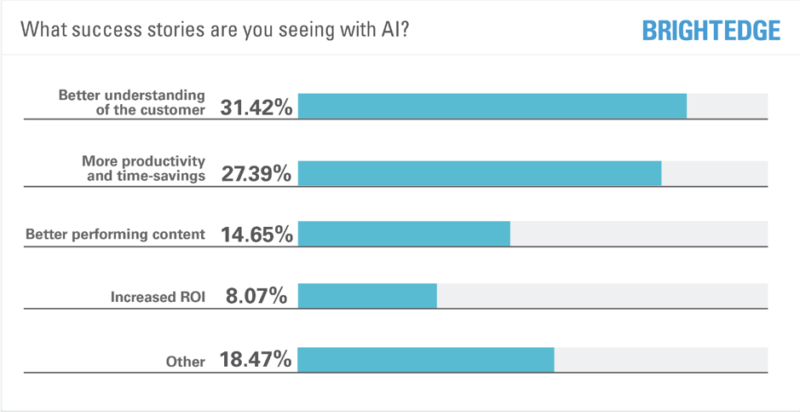Without people operating effectively in their respective roles, we cannot realize the maximum potential of our investments.
I’ve long been an advocate of balance and alignment within the Golden Triangle framework – people, process and technology – as prerequisites to the success of any business solution or strategy. Today I want to focus on the first part of the equation: your people. It is perhaps not nearly as exciting or trendy as the rapid evolution of tech, but the ways in which modern marketing leaders manage the growing number of stakeholders who rely on marketing data is critical.
From customers and audiences to the practitioners/strategists who use martech to enterprise decision-makers and C-level executives (and even interdepartmentally) everyone in any type of organization should have an interest in marketing. At the very least into its insights and the business intelligence that marketing data can provide.
Here are a few tactical ways to better manage those various stakeholders, making the most of your martech to benefit each one.
Use data to drive decision making
The questions people ask of search engines – whether by text or voice – and the keywords they use contain great insight into not only what they’re looking for but why, when, where and what is driving that need.
Analyzing Google’s search results pages can give us great insight into Google’s understanding of various queries and what it believes are the best answers. It is here where data can give marketers the best understanding of customers intent, wants and needs. On-site and local search analytics layer on a whole new understanding of audience intent. How a person arrives onsite, where they spend time, what actions they take, how they navigate through content and other behavioral signals all inform a better understanding of just who your customer is and what drives their decisions.
For these reasons, search marketers are a valuable stakeholder in any conversation where voice of the customer is a consideration. In particular the search marketers on your team can help others understand which metrics and insights are most valuable to inform other marketing channels, but also other departments such as R&D, design, customer service, sales and operations. Help them author reports and presentations that reflect the type and depth of insight C-level executives and other decision-makers expect.
Making SEOs the internal representatives of your customers and bringing them into new projects and products/services early on ensures that each new effort is better informed.
Empower your marketing team members for success alongside AI-powered tech
Artificial intelligence is transforming workplaces of all kinds and it’s completely natural that employees might harbor some anxieties about their job eventually being replaced by AI. In some cases, that may well be true – in Amazon warehouses, for example, order pickers and packers are in fact being replaced by robots.
AI in marketing is a different animal. What we’re finding as AI-powered tools become wider spread and available to businesses of all sizes is that artificial intelligence in martech augments and can actually enhance human performance, rather than replacing it. SEOs have long been coming up with tools to automate repetitive tasks. But now our martech can gather and analyze massive datasets in real-time, trigger actions based on the insights gleaned from that analysis, and even adapt through machine learning to make smarter recommendations. Furthermore, the benefits can be far ranging from a better understanding of the customer through to more productivity and time savings.

Yet even with all of this promise, just 20% of firms surveyed recently by KPMG said they are beyond the pilot stage and ‘up and running’ with their AI efforts. Organizations need to find people with both the technical skill to understand AI’s role and the creativity to make the most of its possibilities. Team members need ongoing training to stay current as AI-powered martech evolves, and they need to feel supported by marketing executives in being allowed to experiment, fail fast and move on.
IT + marketing decision-making = better together
A decade ago, it wasn’t unusual that marketing and IT had an adversarial relationship (if any relationship at all). They were frequently on opposite sides of the table, figuratively and literally, when it came to marketing decisions. Marketing wanted to reach out, invite people in, and be as open as possible. IT’s job was to keep everything as closed as possible. Often, they were pitted against one another in budgeting decisions.
Today, both the CIO and the CMO are realizing the benefits of a more collaborative approach.
- IT is critical in implementing organization-wide change, while Marketing can successfully sell it internally and support implementation with training, communications, and advocacy.
- Marketing has great responsibilities in ensuring proper governance of data and that user privacy protections are in place. This is naturally the domain of IT, who can provide guidance and support execution every step of the way.
- As I said in a previous column on enterprise AI, “CIOs need to shift from a mindset of control and prevention to that of a facilitator and enabler.” CMOs, for their part, need to bring to the table a clear set of measurable goals and a willingness to communicate and collaborate with IT in ways that benefit both parties.
Improve data inputs for team members
Across the board, marketing leaders can support all stakeholders by ensuring the data that serves them is verified, high-fidelity, and compliant. Data governance is also critical in gaining consumer trust, protecting customer privacy, and preventing data breaches.
Marketing leaders need to understand their data sources and any potential issues in each channel that could interfere with the quality of that data. They must also have an eye to where and how data is stored. Where gaps may exist in martech’s ability to parse and format data, how different martech solutions work together (or don’t) and the impact that can have on data quality, and team members’ ability to understand data inputs and outputs are all concerns.
Holistic data management is now the realm of the CMO and the CIO. AI can help prevent errors and even identify issues with data quality, but only if those tasked with operating it understand its capabilities.
Marketing technologies and the processes they facilitate are certainly important areas of focus. But without the people of martech each operating to the full capabilities in their respective roles, we cannot realize the maximum potential of our investments. As you optimize spend, streamline omnichannel strategy, and focus relentlessly on improving the end-user experience, make sure you are setting yourself up for success by managing stakeholders effectively. Technology is never successful without its people.
Opinions expressed in this article are those of the guest author and not necessarily Marketing Land. Staff authors are listed here.
Marketing Land – Internet Marketing News, Strategies & Tips
(50)
Report Post





